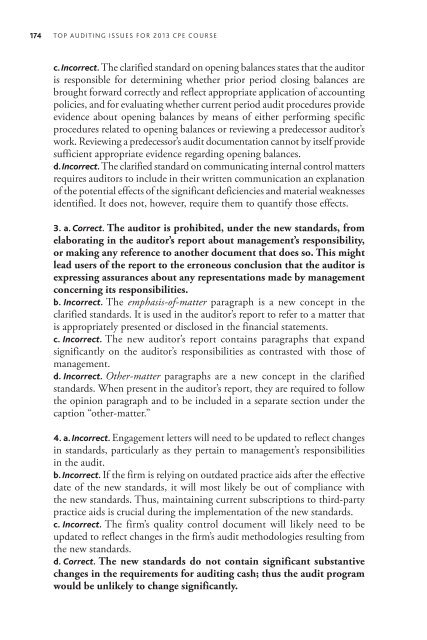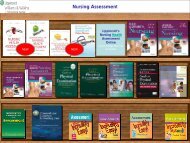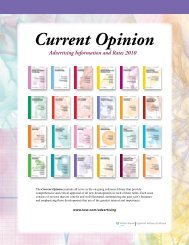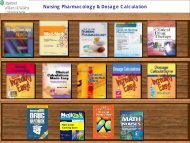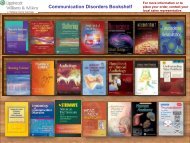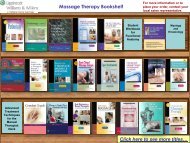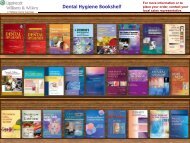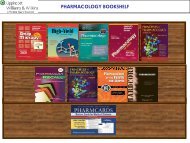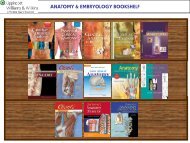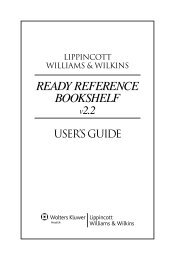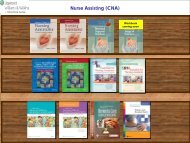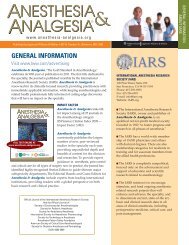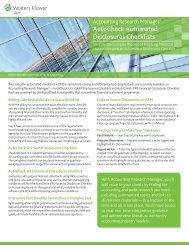TOP AUDITING ISSUES FOR 2013 - CCH
TOP AUDITING ISSUES FOR 2013 - CCH
TOP AUDITING ISSUES FOR 2013 - CCH
You also want an ePaper? Increase the reach of your titles
YUMPU automatically turns print PDFs into web optimized ePapers that Google loves.
174<br />
<strong>TOP</strong> <strong>AUDITING</strong> <strong>ISSUES</strong> <strong>FOR</strong> <strong>2013</strong> CPE COURSE<br />
c. Incorrect. The clarified standard on opening balances states that the auditor<br />
is responsible for determining whether prior period closing balances are<br />
brought forward correctly and reflect appropriate application of accounting<br />
policies, and for evaluating whether current period audit procedures provide<br />
evidence about opening balances by means of either performing specific<br />
procedures related to opening balances or reviewing a predecessor auditor’s<br />
work. Reviewing a predecessor’s audit documentation cannot by itself provide<br />
sufficient appropriate evidence regarding opening balances.<br />
d. Incorrect. The clarified standard on communicating internal control matters<br />
requires auditors to include in their written communication an explanation<br />
of the potential effects of the significant deficiencies and material weaknesses<br />
identified. It does not, however, require them to quantify those effects.<br />
3. a. Correct. The auditor is prohibited, under the new standards, from<br />
elaborating in the auditor’s report about management’s responsibility,<br />
or making any reference to another document that does so. This might<br />
lead users of the report to the erroneous conclusion that the auditor is<br />
expressing assurances about any representations made by management<br />
concerning its responsibilities.<br />
b. Incorrect. The emphasis-of-matter paragraph is a new concept in the<br />
clarified standards. It is used in the auditor’s report to refer to a matter that<br />
is appropriately presented or disclosed in the financial statements.<br />
c. Incorrect. The new auditor’s report contains paragraphs that expand<br />
significantly on the auditor’s responsibilities as contrasted with those of<br />
management.<br />
d. Incorrect. Other-matter paragraphs are a new concept in the clarified<br />
standards. When present in the auditor’s report, they are required to follow<br />
the opinion paragraph and to be included in a separate section under the<br />
caption “other-matter.”<br />
4. a. Incorrect. Engagement letters will need to be updated to reflect changes<br />
in standards, particularly as they pertain to management’s responsibilities<br />
in the audit.<br />
b. Incorrect. If the firm is relying on outdated practice aids after the effective<br />
date of the new standards, it will most likely be out of compliance with<br />
the new standards. Thus, maintaining current subscriptions to third-party<br />
practice aids is crucial during the implementation of the new standards.<br />
c. Incorrect. The firm’s quality control document will likely need to be<br />
updated to reflect changes in the firm’s audit methodologies resulting from<br />
the new standards.<br />
d. Correct. The new standards do not contain significant substantive<br />
changes in the requirements for auditing cash; thus the audit program<br />
would be unlikely to change significantly.


